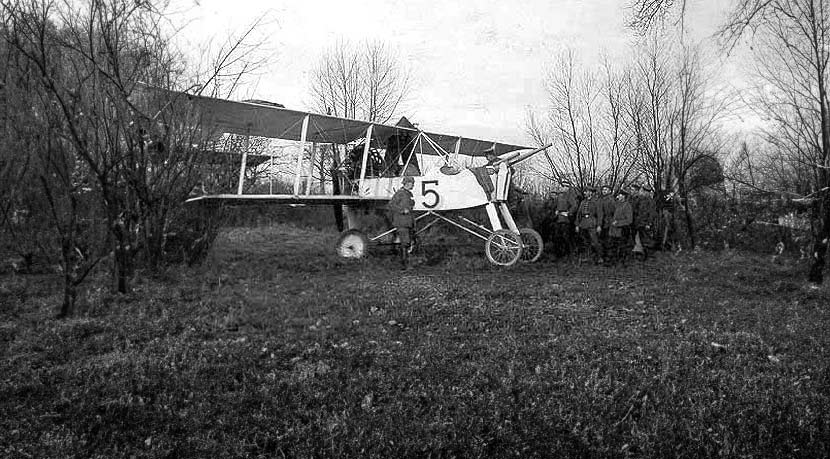The Voisin Type 5, a pivotal WWI French light bomber, notable for its robust design and significant role in early aerial warfare.
This article explores the Voisin Type 5, a French light bomber of World War I, delving into its development, design, performance, military role, and its enduring impact on aviation history. The Voisin Type 5, a product of early 20th-century aviation, stands out as a crucial component of the Allied forces’ air capabilities during World War I. This aircraft represented a significant step in the evolution of military aviation, particularly in the light bomber category.
History of the Development of the Voisin Type 5
The Voisin Type 5 emerged during a time of rapid technological advancements and escalating military needs during World War I. The onset of the war had demonstrated an urgent need for effective aerial bombing capabilities to attack enemy positions and support ground troops.
Developed by the French aviation pioneers, Voisin Frères (Voisin Brothers), the Type 5 was a response to the French military’s requirement for a robust and reliable light bomber. The program was initiated in 1914, with the first flight taking place in 1915. This aircraft was developed as an improvement over its predecessors, focusing on enhanced payload capacity and stability.
Design of the Voisin Type 5
The Voisin Type 5 was a pusher biplane, a design where the engine was located at the rear of the aircraft, pushing it through the air. This configuration allowed for an unobstructed field of fire from the front. It had a wingspan of approximately 14.75 meters (48 feet 5 inches) and a length of about 9.60 meters (31 feet 6 inches).
Constructed predominantly from wood and fabric, the Type 5 was both sturdy and relatively lightweight. Its notable design feature was the enclosed bomber’s position at the front, offering better protection and comfort for the crew. However, this design had its drawbacks, such as limited forward visibility for the pilot and a relatively slow speed.

Performance of the Voisin Type 5
The Voisin Type 5 was powered by a Salmson M9 engine, producing about 150 horsepower. This enabled a top speed of around 105 kilometers per hour (65 miles per hour), with an operational ceiling of approximately 3,300 meters (10,826 feet). Its range was about 200 kilometers (124 miles).
When compared to contemporaries like the German Albatros C.I, the Voisin Type 5 was less agile but had a superior payload capacity, making it a valuable asset for light bombing missions.
Military Use and Combat of the Voisin Type 5
The Voisin Type 5 served primarily in the French Air Service, where it was utilized for bombing raids, reconnaissance missions, and artillery spotting. It was armed with a 37mm cannon and had the capacity to carry a modest payload of bombs.
The Type 5 saw extensive service on the Western Front, where it was effective in harassing enemy positions and providing critical support to ground forces. While it faced competition from German aircraft like the aforementioned Albatros C.I, its robust design and effective armament ensured that it remained a key player in the aerial battles of the time.
The aircraft was not widely exported, and its operational use was predominantly confined to the French military. By the end of the war, the Voisin Type 5 was gradually phased out in favor of more advanced designs.
The Voisin Type 5 represents a significant chapter in the history of military aviation. As one of the early light bombers, it played a crucial role in shaping aerial warfare tactics during World War I. Its design, while not without flaws, demonstrated the ingenuity and adaptability of early 20th-century aviation technology. Despite being eclipsed by later advancements, the legacy of the Voisin Type 5 endures as a testament to the pioneering spirit of early aircraft designers and their contributions to the evolution of aerial combat.
Back to the Bombers section.